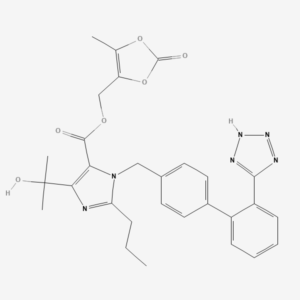Our bodies are a fascinating canvas of complex microorganisms, a delicate balance that, when disrupted, can lead to infections. One such peril arises from fungi, leading to various skin, nail, and systemic infections. Among the tools that modern medicine employs to combat such diseases, Itraconazole stands as a potent weapon. This comprehensive blog post will explore the intricacies of Itraconazole, including its mode of action, primary uses, potential side effects, and vital precautions.
ITRACONAZOLE: THE BASICS
Itraconazole is an antifungal medication classified under the triazole group. Known for its broad-spectrum activity, it is often prescribed for a diverse range of fungal infections, both systemic and superficial. Systemic formulations can tackle infections in areas like the lungs, mouth, throat, and nails. In contrast, the topical form is ideal for treating skin and nail infections. The convenience and efficacy of Itraconazole make it a prominent tool in the physician’s arsenal.
HOW ITRACONAZOLE TAKES ACTION
Like other antifungals, the primary goal of Itraconazole is to curb the growth of fungi. It specifically targets the fungal cell membrane by inhibiting the enzyme cytochrome P-450 14α-demethylase. This enzyme plays a vital role in the synthesis of ergosterol, a crucial component of the fungal cell membrane. When the production of ergosterol is halted, the structure and functionality of the cell membrane get compromised, leading to fungal cell death.
THE MULTIFACETED THERAPEUTIC ROLES OF ITRACONAZOLE
1. COMBATING DIVERSE FUNGAL INFECTIONS
The primary application of Itraconazole lies in treating a variety of fungal infections. It effectively combats infections caused by fungi like Candida, Aspergillus, Blastomyces, Histoplasma, and different dermatophyte species.
2. ADDRESSING ONYCHOMYCOSIS
Itraconazole has proven to be highly effective in treating onychomycosis, a condition characterized by fungal infection of the nails. Patients generally consume the medication for several months to entirely clear the infection.
3. ACTING AS A PREVENTIVE MEASURE
In immunocompromised individuals, like patients undergoing chemotherapy or those living with HIV/AIDS, Itraconazole serves as a preventive measure, safeguarding them from potential fungal infections.
4. EXPANDING HORIZONS
The versatile drug has even been researched for its potential role in treating certain types of cancer, demonstrating the continually expanding therapeutic horizon of Itraconazole.
POTENTIAL SIDE EFFECTS AND RISKS: THE FLIP SIDE OF THE COIN
While Itraconazole is a potent medication, it does come with potential side effects:
1. GASTROINTESTINAL DISCOMFORT
The most common side effects involve the digestive system and may include nausea, vomiting, diarrhea, and abdominal pain.
2. RISK OF LIVER TOXICITY
Rarely, Itraconazole may cause liver damage. Patients on prolonged therapy or those with pre-existing liver conditions usually undergo regular liver function tests for close monitoring.
3. CARDIOVASCULAR IMPLICATIONS
Itraconazole can contribute to heart failure, especially in patients with pre-existing heart conditions or those receiving high doses of the medication.
4. ALLERGIC REACTIONS
Although quite uncommon, some people might experience an allergic reaction to Itraconazole. This could lead to symptoms such as rash, itching, and difficulty breathing.
PRECAUTIONS WHEN USING ITRACONAZOLE
In the context of using Itraconazole, it’s essential to heed the following precautions:
1. COMPLETE MEDICAL HISTORY: YOUR HEALTHCARE PROVIDER SHOULD BE AWARE OF YOUR COMPLETE MEDICAL HISTORY, ESPECIALLY IF YOU HAVE LIVER DISEASE, HEART DISEASE, KIDNEY DISEASE, OR OTHER SERIOUS HEALTH CONDITIONS.
2. DRUG INTERACTIONS: ITRACONAZOLE CAN INTERACT WITH VARIOUS OTHER MEDICATIONS, ALTERING THEIR FUNCTIONING OR ESCALATING SIDE EFFECTS. THUS, YOUR HEALTHCARE PROVIDER NEEDS TO BE INFORMED ABOUT ALL THE MEDICATIONS AND SUPPLEMENTS YOU’RE CURRENTLY CONSUMING.
3. PREGNANCY AND BREASTFEEDING: ITRACONAZOLE SHOULD ONLY BE USED DURING PREGNANCY WHEN ABSOLUTELY NECESSARY. ALSO, BREASTFEEDING WHILE ON THIS MEDICATION IS TYPICALLY DISCOURAGED DUE TO THE POTENTIAL RISK TO THE INFANT.
4. DOSAGE: ALWAYS ADHERE TO THE PRESCRIBED DOSAGE. THE DOSE AND DURATION OF THERAPY DEPEND ON THE TYPE AND SEVERITY OF THE INFECTION AND THE PATIENT’S OVERALL HEALTH STATUS.
CONCLUSION: A TRUSTED ALLY IN ANTIFUNGAL THERAPY
Itraconazole is an indispensable asset in combating fungal infections. Its broad-spectrum antifungal activity and potent therapeutic benefits make it a top choice among healthcare providers. Nonetheless, like any medication, it requires responsible use under medical supervision to balance the risks and benefits. Remember, our ultimate goal is not merely to treat an ailment but to promote comprehensive health and wellness.




